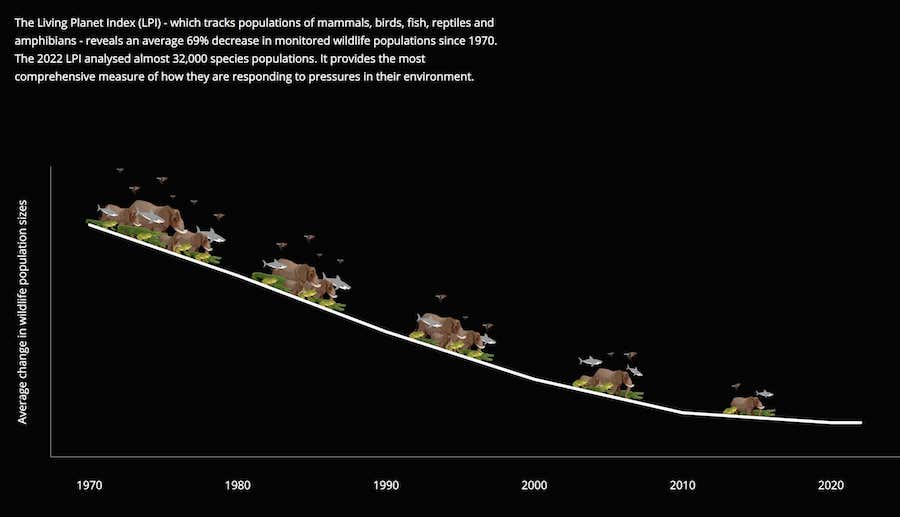The wildlife population of vertebrates has fallen by nearly 70% on average over the past 50 years, according to World Wildlife Fund’s (WWF) Living Planet Report 2022.
Key factors of biodiversity decline
Several key factors of biodiversity decline have been identified in the report, including:
- Climate change
- Habitat loss
- Invasive species
- Species overexploitation
- Pollution
- Diseases
All these factors are placing wildlife on the planet on the brink, highlighted the report.
Transform economies
The report further called on the policymakers to transform economies so that natural resources are properly treasured.
“The world is waking up to the fact that our future depends on reversing the loss of nature just as much as it depends on addressing climate change. And you can’t solve one without solving the other,” said Carter Roberts, president and CEO of WWF-US.
“Everyone has a role to play in reversing these trends, from individuals to companies to governments,” he added.
Major Wildlife Population Decline
According to the statistics shared in the WWF report, following major population declines in numerous species around the globe have been recorded:
- Wildlife population sizes have fallen by 69% on average between 1970 and 2018
- Biodiversity richness in the UK dropped to 50% of previous levels
- Britain’s wildlife such as skylarks and hedgehogs are no longer present in everyday sightings
- 92% of seagrass habitat and 97% of wildflower meadows have been lost in Britain
- Wildlife populations of Latin America and the Amazon have shrunk by 94% on average
- The population of the Amazon pink river dolphin, in the Mamiraua Sustainable Development Reserve in the Brazilian state of Amazonas declined by 65 % between 1994 and 2016.
In December, leaders from across the world will meet at the 15th Conference of Parties to the Convention of Biological Diversity (CBD COP15) for a once-in-a-decade occasion to course-correct for the sake of planet Earth and its people.


